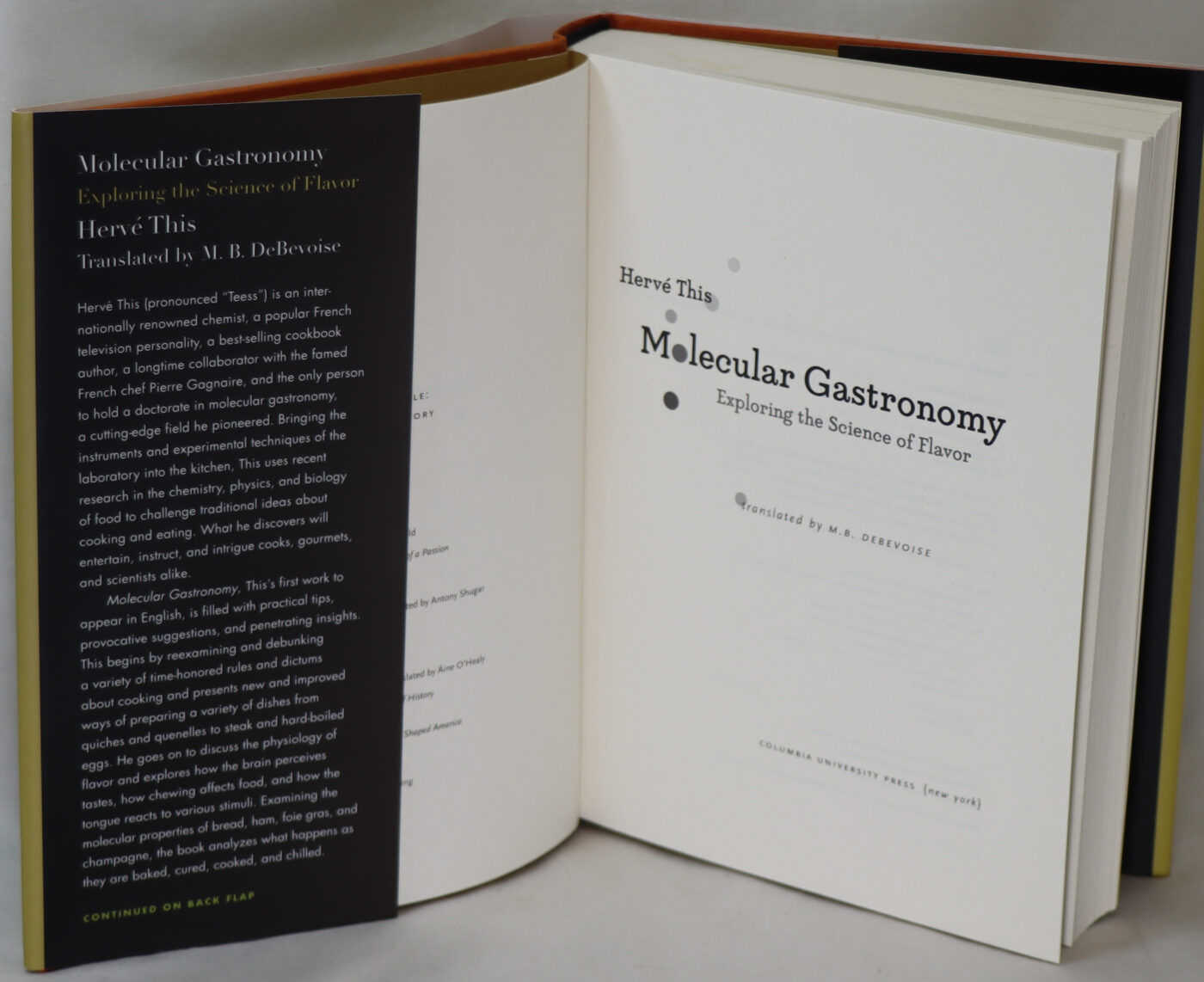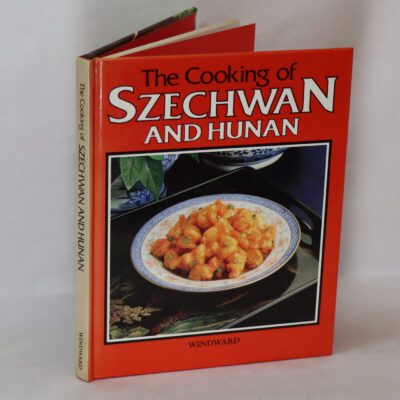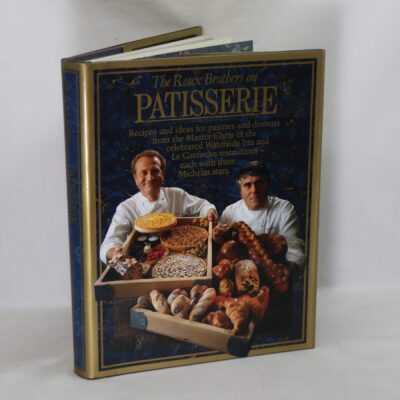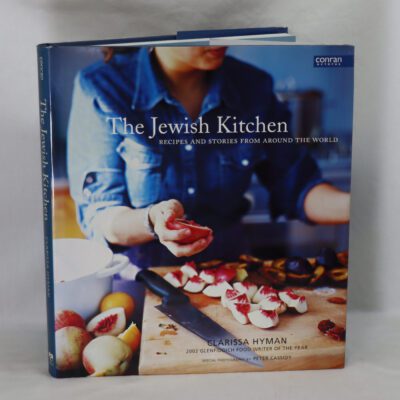Molecular Gastronomy.
By Herve This
Printed: 2006
Publisher: Columbia University Press. New York
| Dimensions | 16 × 21 × 3 cm |
|---|---|
| Language |
Language: English
Size (cminches): 16 x 21 x 3
Condition: Fine (See explanation of ratings)
Item information
Description
In the original dust jacket. Orange board binding with gilt title on the spine.
We provide an in-depth photographic presentation of this item to stimulate your feeling and touch. More traditional book descriptions are immediately available
- Note: This book carries a £5.00 discount to those that subscribe to the F.B.A. mailing list
For conditions, please view our photographs. A nice clean rare copy from the library gathered by the famous Cambridge Don, computer scientist, food and wine connoisseur, Jack Arnold LANG. Jack founded the Midsummer House, Cambridge’s paramount restaurant. This dining experience is hidden amongst the grassy pastures and grazing cattle of Midsummer Common and perched on the banks of the River Cam.
This is a very under rated brilliant book.
Herve This (pronounced “Teess”) is an internationally renowned chemist, a popular French television personality, a bestselling cookbook author, a longtime collaborator with the famed French chef Pierre Gagnaire, and the only person to hold a doctorate in molecular gastronomy, a cutting-edge field he pioneered. Bringing the instruments and experimental techniques of the laboratory into the kitchen, this uses recent research in the chemistry, physics, and biology of food to challenge traditional ideas about cooking and eating. What he discovers will entertain, instruct, and intrigue cooks, gourmets, and scientists alike. “Molecular Gastronomy” – this’s first work to appear in English, is filled with practical tips, provocative suggestions, and penetrating insights. This begins by reexamining and debunking a variety of time-honored rules and dictums about cooking and presents new and improved ways of preparing a variety of dishes from quiches and quenelles to steak and hard-boiled eggs.He goes on to discuss the physiology of flavor and explores how the brain perceives tastes, how chewing affects food, and how the tongue reacts to various stimuli. Examining the molecular properties of bread, ham, foie gras, and champagne, the book analyzes what happens as they are baked, cured, cooked, and chilled. Looking to the future, This imagines new cooking methods and proposes novel dishes. A chocolate mousse without eggs? A flourless chocolate cake baked in the microwave? “Molecular Gastronomy” explains how to make them. This also shows us how to cook perfect French fries, why a souffle rises and falls, how long to cool champagne, when to season a steak, the right way to cook pasta, how the shape of a wine glass affects the taste of wine, why chocolate turns white, and how salt modifies tastes.
Review: This is a very interesting book covering a wide range of topics on the subject of flavour, taste and smell perception as well as the application of basic science to food and drink technology. I was particularly interested in the recent research into the physiology of taste perception, which until recently was the poor cousin of that of the sense of smell. There is a fair bit of chemistry, biochemistry and physics to take in to get full value from the book so I think this book would appeal most to those not only interested in food and cooking but also with some scientific knowledge. The last section of the book focuses on how the physico-chemical properties of ingredients like eggs or fats can be manipulated into creating novel recipes for foods. One can see where the likes of the innovative chef Heston Blumenthal got his inspiration.
Hervé: This is a physical chemist of the Institut National de la Recherche Agronomique in Paris. One of the two founders of the science called molecular gastronomy, he is the author of Columbia’s Kitchen Mysteries: Revealing the Science of Cooking and of several other books on food and cooking. He is a monthly contributor to Pour la Science, the French-language edition of Scientific American.
Want to know more about this item?

Related products
Share this Page with a friend












